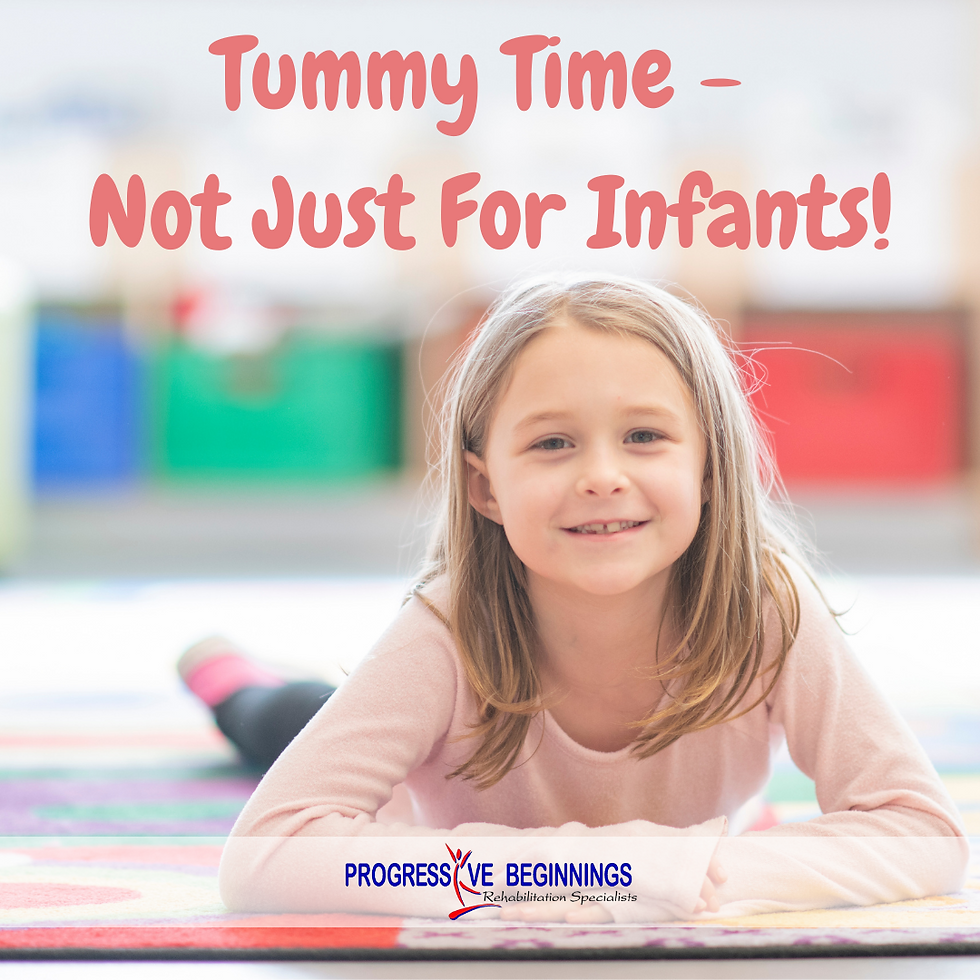Tummy Time - Not Just For Infants!
- jessicapt

- Feb 18, 2022
- 2 min read

Many parents hear the buzz word “tummy time” when they have an infant. However, playing while in prone, or propped up on your elbows while lying on your stomach, can be for all ages (and should be)! Think about how often you or your child lies and plays on the ground? The older children get, the more normalized sitting in a chair at a tabletop becomes, taking away from very important growth areas that playing in prone can provide.
Engaging in activities while in prone is a wonderful way to help your child organize and regulate sensory input from their environment. When a child is supporting themselves with the use of their shoulder girdle and upper extremity strength (not resting their chin in their hands), it positions their neck in extension which activates the brainstem, the area of your brain that assists with regulation.
Further benefits from engaging in play while in prone includes:
Increasing shoulder girdle strength and stability which is essential for fine motor and visual motor development (think handwriting, scissor skills, hand-eye coordination).
Increasing ocular motor development.
Providing deep pressure touch input to the entire surface of the body that is touching the ground, further improving sensory regulation.
Promoting prone extension which is an essential developmental pattern for sensory integration.
Look for these signs when your child is engaging in prone prop while playing:
Breath holding
Fidgeting (squirmy arms and legs)
Moving in and out of the position (transitioning to side lying or to a seated position)
Lying their head on their arms
If you notice these, it could be a sign your child could use more exposure to this position.
Maintaining prone positioning can be challenging for children, especially if it is not engaged in often. Ways to modify can be having your child maintain the propped position on their elbows for a minute or two while engaging in a preferred activity, then taking a rest by putting their head and shoulders on the ground, taking a few deep breaths, and returning to the propped position again to engage in another aspect of the activity. Another way to modify this activity is to have the child engage in activities while lying on their stomach on an exercise ball or peanut ball. You could even stack up a few pillows or couch cushions to make an inclined ramp to decrease amount of weight the child is required to support through their shoulders.
Click on the link below to explore fun ways to have your child engage in prone!
Blog written by: Mikelyn Schneiss, MS, OTR/L



















































Comments